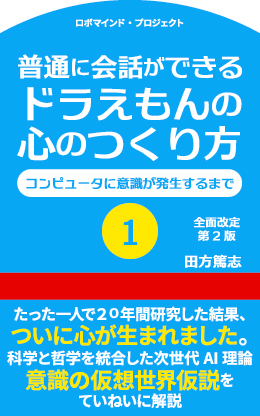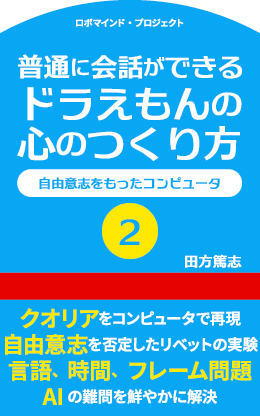
How to Define the Meaning of Verbs: Part 1
How to Define the Meaning of Verbs: Part 1
How can we understand the meaning of “to put”? – the phase of the linguistical world
To summarize what I have explained in the last post, consciousness identifies the virtual world.
The virtual world has a setting made up of time and place and inside a setting, a series of happenings occur.
A happening refers to something occurring, and you can structure it mainly using verbs.
Now let’s think about verbs that lie in the center of happenings.
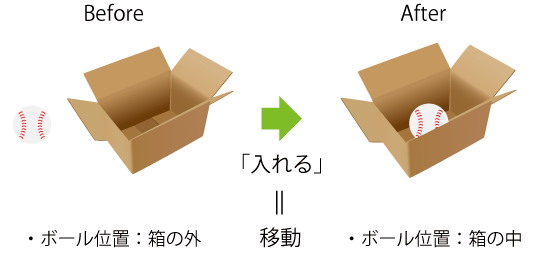
The meaning of verbs lies in changing items placed in the virtual world or objects of characters.
In a sentence “I put a ball inside the box”, by executing the verb “to put”, the ball that was placed initially outside the box is now inside the box.
So, moving the ball into the box is the meaning of the verb “to put”.
On the contrary, what determines the fact that it understands the meaning of verbs?
One way to look at it is its ability to detect erroneous use of verbs.
If it is capable of finding it out, you can say that it fully comprehends the meaning of that said verb.
Then, what is erroneous use of verbs?
That is, when you interpret a sentence you can’t generate a single object in the virtual world.
For example, when there are grammatical errors or the sentence is physically impossible to happen.
Without these problems and meeting all the conditions, it can finally execute the action of a verb.
Hence, verbs have several layers of conditions that determine the capability of execution.
So, let’s look at the verb “to put” and its conditions of execution by following the layers.
As I have explained before, understanding a meaning of something is in two parts -the phase of the linguistical world and the phase of the virtual world.
First, we are going to take a look at the conditions of execution at the phase of the linguistical world.
The conditions of execution “to put” (linguistical world)
The first layer grammatical level
Rule:The subject is a noun
This rule stipulates that any part of speech considered as subject can only be “noun”.
According to this rule, for example, the use “to put to walk” provokes an error as it is grammatically incorrect.
Consciousness, faced with grammatical error, it responds such as “ ‘to put to walk’ does not make sense”.
Since it is grammatically incorrect, it obviously cannot construct a virtual world – it halts the analysis from this point on.
If there is no issue at grammatical level, it will proceed to the analysis at construction element level.
The second layer construction element level
Rule: The necessary construction elements for the verb ”to put” are “subject” and “place”.
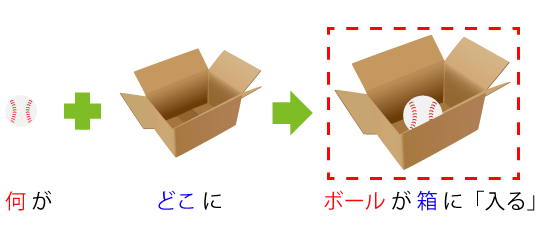
Construction elements refer to the result of the construction analysis – elements such as subject, place and methods.
For example, a subject refers to the word attached to “wa*” and “ga*”, a place refers to the word attached to “he*” and “ni*” (*postpositional particles of the Japanese language).
The rule here is that The necessary construction elements for the verb ”to put” are “subject” and “place”.
In other words, we need to have elements that explain “what (to put)” and “where (to put)”.
Each verb has a bare minimum construction elements registered, and it examines whether required elements exist based on the result of construction analysis.
For example, a sentence “is inside the box” does not specify “what”. So you would ask “what is inside the box?”.
As for a sentence “A ball is inside”, you would ask “a ball is inside where?”.
When all necessary elements are set, we can now move on to the next level, drawing level.
The third layer drawing level
Rule: whether or not one can draw it in a picture
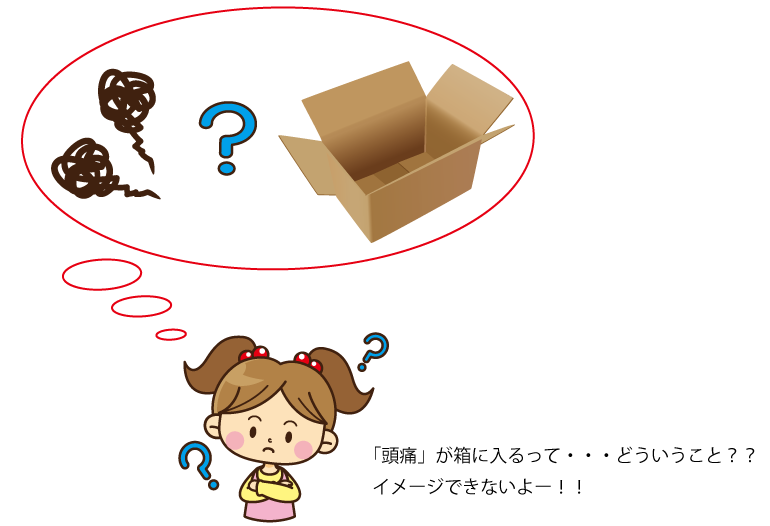
For example, a sentence that reads “to put headache in a box”, although it is grammatically correct for having a noun as the subject, you can’t picture it in your head.
Whether you can draw it in a picture indicates whether you can picture it inside your head.
Here we define that the subject and the object place for the verb “to put” are both under “concrete” concepts.
In that sense, since the word “headache” is not a concrete concept but an abstract one, an error arises at drawing level.
Consciousness, faced with an error at drawing level, it replies “I can’t picture the sentence ‘to put headache’ “.
Here is the overview of the linguistical world which can only be expressed in words.
Anything that is determined as errors in the linguistical world cannot be pictured.
It also means that it can neither be generated as objects in the virtual world.
After confirming that there are no errors in the linguistical world, it proceeds to the next phase of the virtual world.

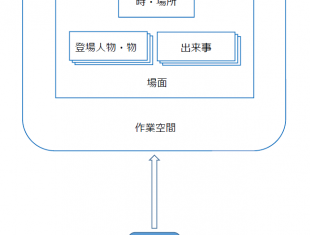 Linguistical World and Virtual World-How to construct a world inside your head from a sentence-
Linguistical World and Virtual World-How to construct a world inside your head from a sentence-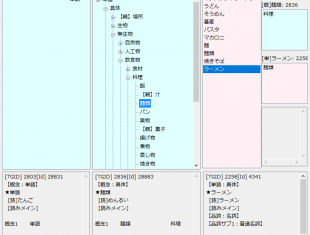 How to Define the Meaning of Words
How to Define the Meaning of Words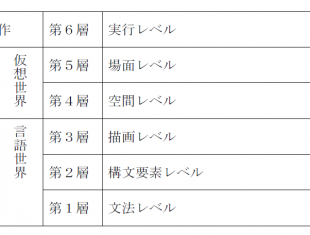 How to Define the Meaning of Verbs: Part 2
How to Define the Meaning of Verbs: Part 2